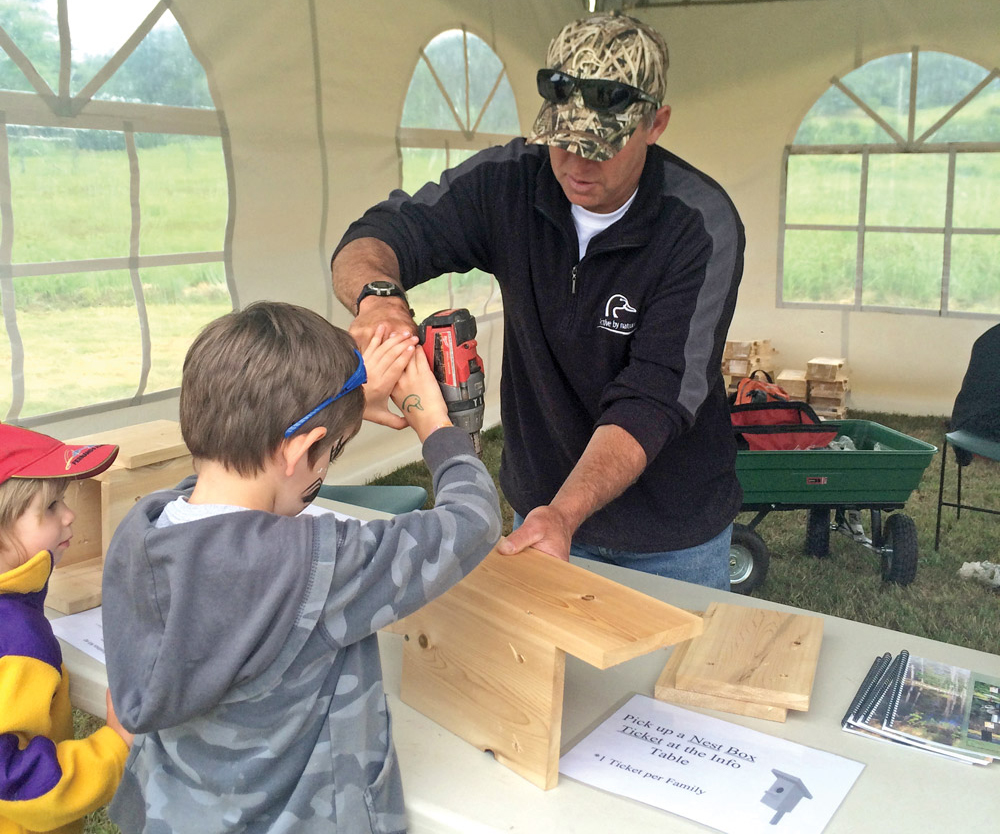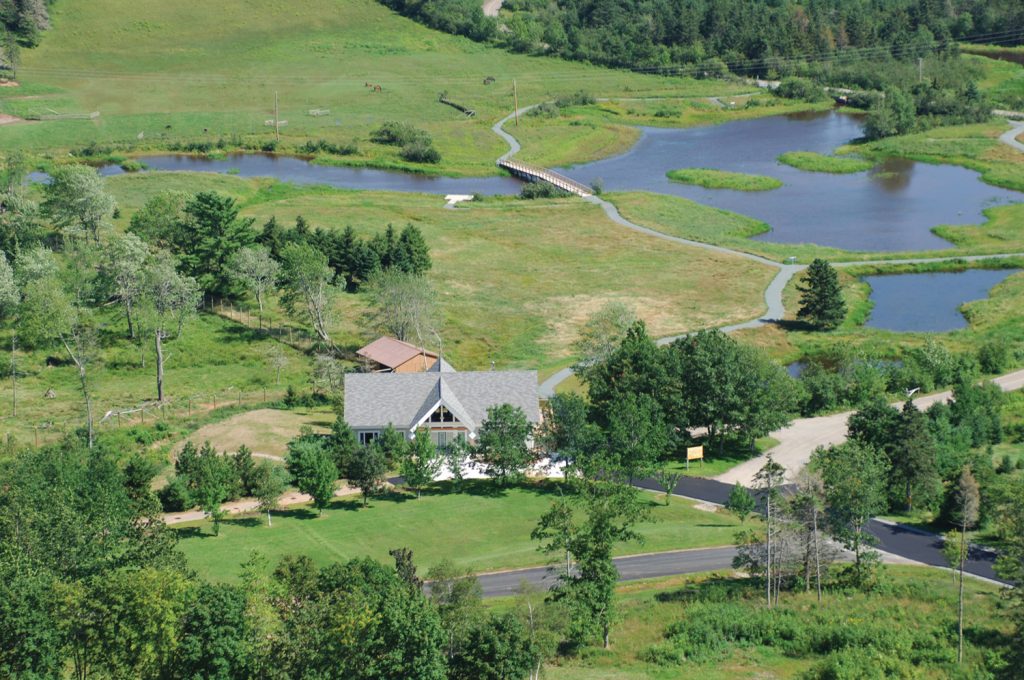Parks and education
Teaming up to transform the Shubenacadie Wildlife Park into a premier destination for outdoor learning

Visitors trickle into the Shubenacadie Provincial Wildlife Park, drawn toward the big lawn in front of the wetland interpretive centre, where barbecues are firing up. By 10 a.m. on this July day, the park is buzzing. Families with smiling face-painted children flit between critter dipping for invertebrates in the wetlands, building songbird nest boxes, making crafts, learning to fish – then stopping for a break and a hot dog on the lawn.
It’s Duck Day, an annual celebration that connects Nova Scotians with wildlife and wild places. Nature interpreters from the Nova Scotia Department of Natural Resources (DNR) work with DUC staff, who work alongside volunteers.
“It’s a unique partnership,” says Trish MacNeil, DNR executive director for policy and planning. “When you have the right people working together, that matters.”
Located mid-way between Halifax and Truro, Shubenacadie Provincial Wildlife Park began in the 1940s as a white-tailed deer refuge. It opened in 1954 as a place to rehabilitate injured or mistreated animals. Park manager Bert Vissers has worked at the park since 1979, seeing it evolve from that small original facility to the modern park it is today. Wildlife cared for in the park share large enclosures and fields with nesting bald eagles and chirping songbirds.
Vissers says the park gives visitors a chance to experience wildlife that live in their province, like white-tailed deer, moose and black bear. “A picture of an animal is completely different from seeing the animal in front of you, smelling the animal, hearing it,” says Vissers. “That’s the value.”
DUC approached the DNR about building an interpretive centre in the park in 2003. The centre was completed in 2006. It serves as the educational programming centre for the park, visited by between 5,000 and 6,000 school students each year. In spring and fall, buses stream in each morning full of kids from local elementary, middle and high schools, who learn about biodiversity, species at risk and the importance of wetlands.
“The education programs that happen at the wetland centre are unlike any other,” says DUC education specialist Katie Scott. “Whether they’re in the wetlands dipping on the dipping dock, or on a nature walk, or whether they’re seeing a black bear that’s two feet from them, it’s a very immersive education that happens here, and experiences that kids won’t get anywhere else.”
With around 100,000 visitors each year, there’s the potential to reach so many Nova Scotians through more developed, immersive nature experiences and programs. Since 2014, DUC and DNR have been working to rewrite and renew their partnership agreement for the park and the wetland interpretive centre. They’re committed to getting Nova Scotians outside to experience the province’s natural wonders by creating a must-see tourist and community destination, and becoming a nature-based education leader.
In July 2015, DUC received $400,000 in funding from the Atlantic Canada Opportunities Agency to make changes to the wetland centre. DNR in turn promised to match part of that funding by allocating $200,000 toward the project at the wildlife park. DUC promised to raise $200,000 through fundraising. Maritimes & Northeast Pipeline and Aqua Terra Kennel have committed major donations to the project.

©DUC
DUC completed many of the changes this summer. These include a new visitor entrance and plaza where a local bakery runs a canteen just outside of the wetland centre. New user-friendly wayfinding signage and a map with trail names are now installed.
Upcoming work includes new interpretive elements: a new outdoor classroom and dipping dock, a viewing blind for the wetland trail, and one of the project’s centrepieces, a hands-on nature centre. Here, kids can look at, hold and learn about objects like feathers, rocks and bones that they find outside.
“We want people to leave the park with a greater appreciation of our wildlife and wetland resources,” says Bob Petrie, director of DNR’s wildlife division. “Young people who are fascinated by wildlife are more likely to carry those values throughout their lives in ways that help us conserve wildlife and ecosystems.”



